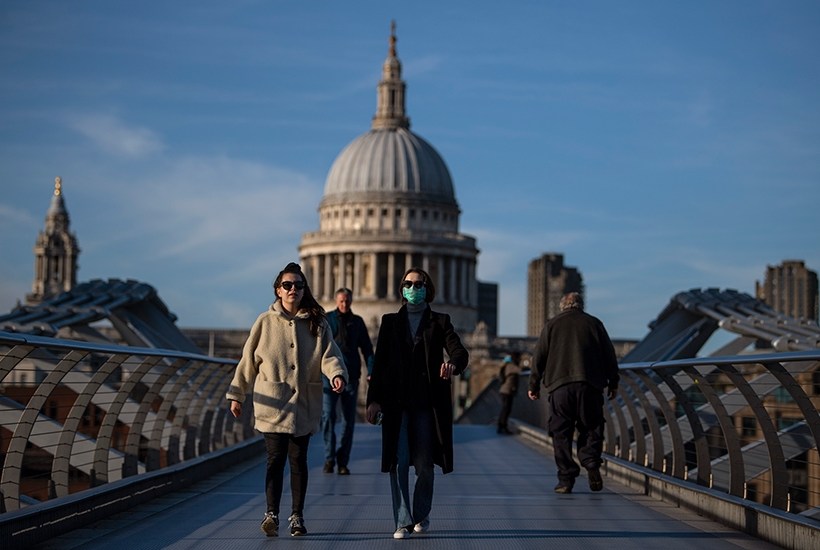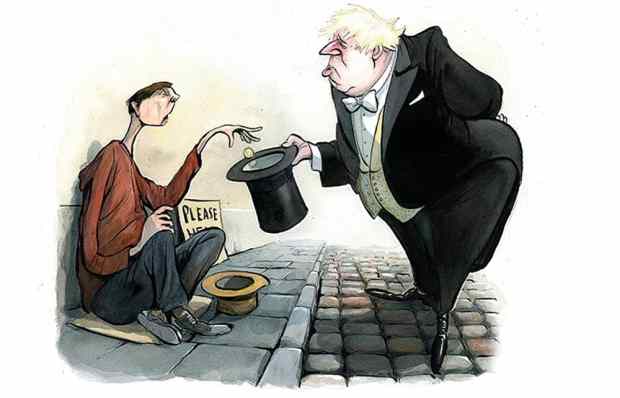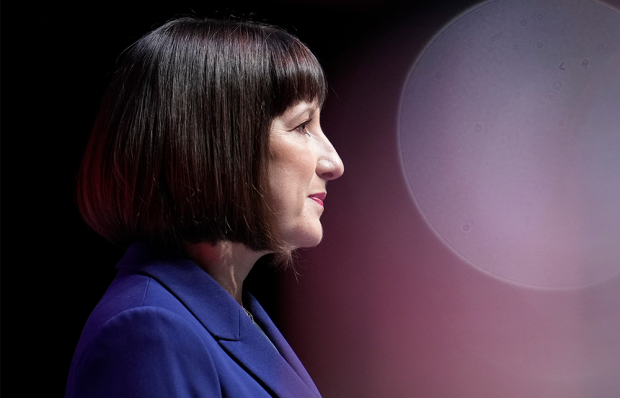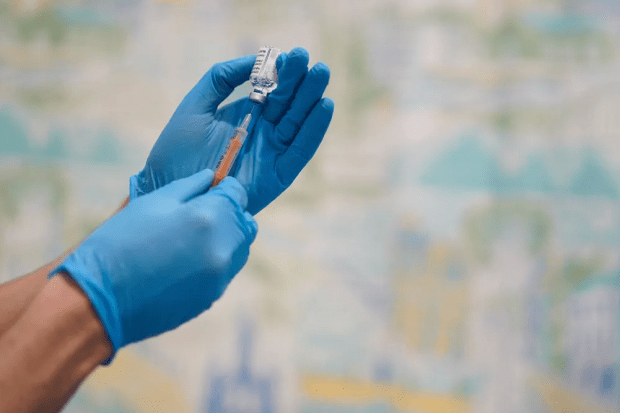The failures of Britain’s pandemic planning have been brutally exposed in the past few weeks. The scandalous lack of protective equipment for NHS workers, the failure to prepare for mass testing: there will be plenty of time, when this is over, to apportion blame for all this. But what is even more striking is the achievements of those in the military, the health service and public service who have — in a matter of days — done the seemingly impossible in preparing the NHS to cope with the virus.
A few weeks ago, the world was admiring the ability of the Chinese government to rapidly build a 1,000-bed hospital in Wuhan. Since then the NHS, the British Army and their partners in the private sector have made arrangements for 4,000 beds in a London exhibition centre. The NHS is now well-prepared for the expected surge in Covid-19 cases. Furthermore, the reorganisation within NHS wards has meant that 30,000 beds in existing hospitals have been re-allocated. As a result, there have been no reports of hospitals being overrun.
We are not yet past the worst of this, but ministers are now far more confident that we will avoid a repetition of the scenes in Lombardy. New York may not be so lucky. Doctors there report a chronic shortage of ventilators, dialysis machines, sedating machines and feeding pumps. Some hospitals report four or five patients dying during one emergency shift, with intensive care wards taking on four times their normal load. Donald Trump, who was initially dismissive of the coronavirus threat, is now talking about it taking more American lives than you lose in world wars.
Britain’s response to the pandemic has been at all times rooted in the best expert advice available. The advice may prove to have been too gloomy: Imperial College London has gone from saying that Covid-19 could claim 500,000 lives to saying the figure is likely to be below 20,000 (and that two thirds of these deaths would have occurred this year anyway). This suggests around 7,000 killed by coronavirus, far below the 17,000 who typically die from seasonal influenza. It also remains to be seen if a second wave of Covid will increase this death toll.
Yet there is one thing missing from the government’s performance: an endgame. Indeed, there seems to be some collective confusion on this point. The ‘lockdown’ conditions were once explained as ‘buying time’ for the NHS to prepare. This has worked. But on Sunday Dr Jenny Harries, the deputy chief medical officer, suggested that it might be six months before life in Britain returns to normality, because the virus will be with us for a lot longer. There is also uncertainty about the extent to which the virus has been contained by the lockdown.
Harries explained that it can take months to get a clear view of a new virus — even the basics, such as how lethal it is compared to seasonal flu. This was the case with swine flu: it took blood tests to understand that it had spread ten times more widely in Britain than clinical testing had established. In the absence of clear data, governments have to prepare for reasonable worst-case scenarios.
But there is data the government could — and should — share. Before the crisis the NHS had about 4,100 critical care beds, of which about 3,300 were occupied at any one time. How many of them are being used now? Figures are compiled daily. Releasing them would help more people to understand the burden that Covid-19 is likely to place on the NHS.
There is an urgent need for antigen tests that are capable of telling who has the virus. The NHS is currently suffering one of the biggest staff shortages in its history. This is due to the number who are quarantined at home under guidelines advising confinement for everyone in a household if a single member of that household develops signs of the virus. A study of a small group of such quarantined workers suggested that 85 per cent tested negative for coronavirus and had been able to rejoin their colleagues on the NHS front line. If more workers could be tested, staff pressures would be relieved.
But the government is rightly prioritising antibody tests, which can identify who has had the virus and can therefore return to work. A few thousand random samples taken from around the country would help determine whether — as an Oxford University study has postulated — many Brits have already had the virus and it is too late to stop its spread. This, broadly speaking, is what Swedes think: that the virus is a manageable risk, likely to spread without really troubling the majority of those it infects. A very different view is taken by Professor Neil Ferguson of Imperial College London, who thinks that the virus is being successfully contained — and even in hotspots like London is unlikely to affect more than 5 per cent of the population.
The virus might be with us for months. But a clearer picture — both about Covid-19 and about our ability to cope — should emerge within the next few days. The government has understandably (in common with many other countries) been drawn down the road of lockdown. But even now, before the pandemic has peaked, a route out needs to be plotted. If the government has such plans, it is keeping very quiet about them.
Got something to add? Join the discussion and comment below.
Get 10 issues for just $10
Subscribe to The Spectator Australia today for the next 10 magazine issues, plus full online access, for just $10.
You might disagree with half of it, but you’ll enjoy reading all of it. Try your first month for free, then just $2 a week for the remainder of your first year.














Comments
Don't miss out
Join the conversation with other Spectator Australia readers. Subscribe to leave a comment.
SUBSCRIBEAlready a subscriber? Log in